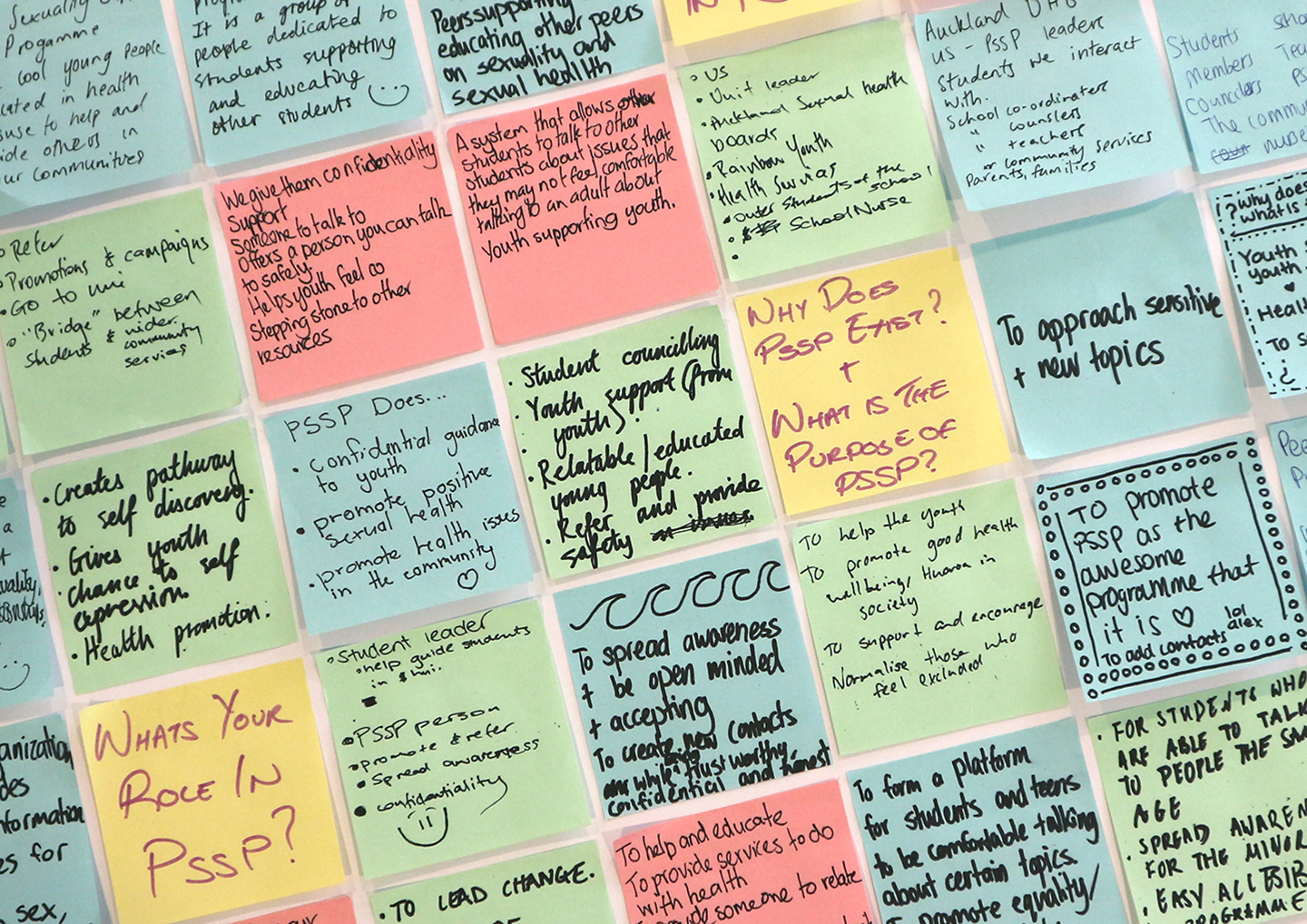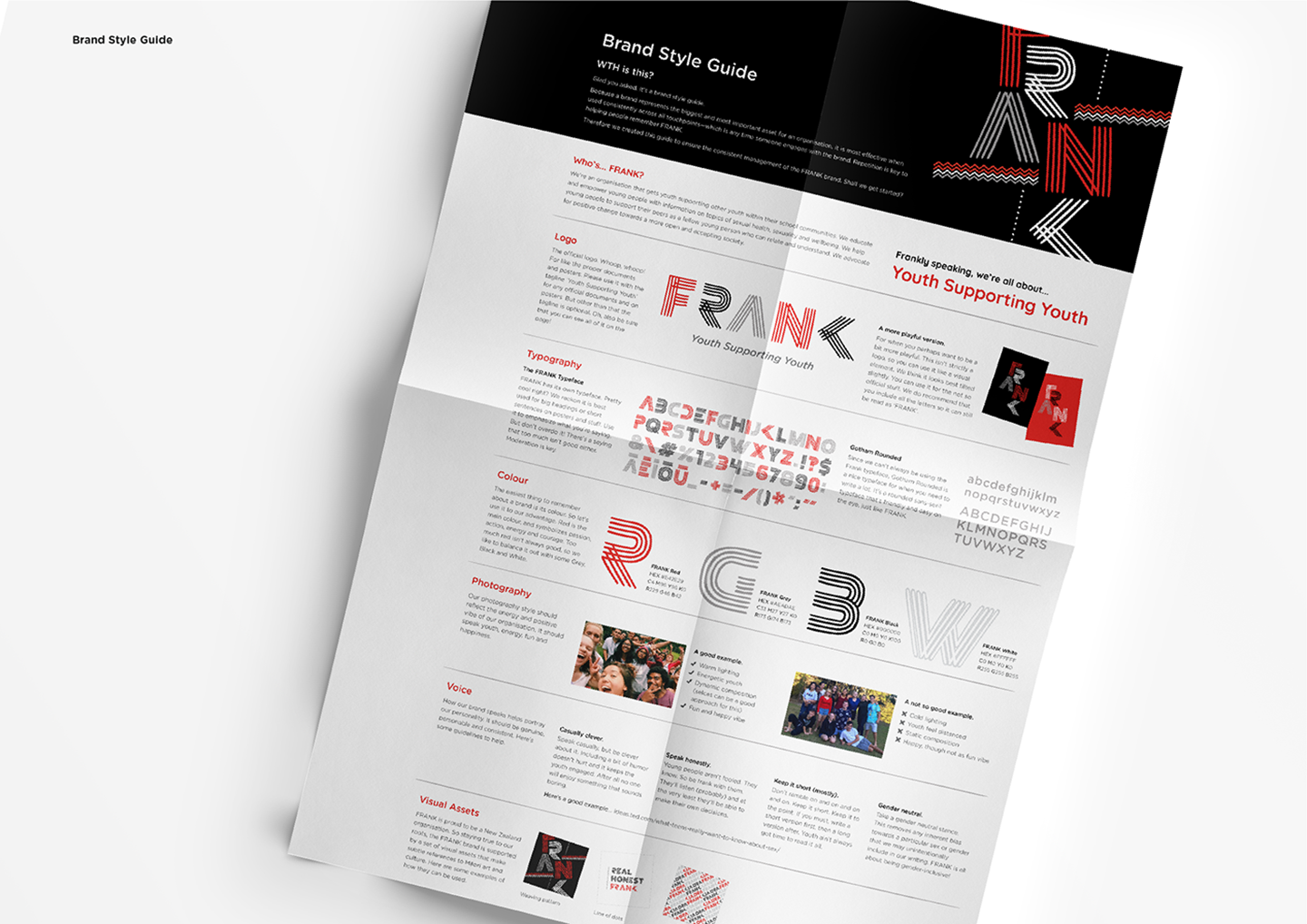Postgraduate Design Research – Cassie Khoo, AUT
Welcome to Postgraduate Design Research – an opportunity to profile a selection of current design postgraduate students and their projects across our tertiary institutions. This week, we speak with Cassie Khoo from AUT.
Cassie Khoo
Master of Design
Auckland University of Technology

Tell us about your research.
My research looked at how we can use co-design to engage young people in the design of a brand and online platform. Co-design is an approach that values users as active contributors by bringing them into the design process as experts of their own experiences. Through co-design, designers and non-designers work together to produce solutions that more effectively meet the real needs of the end-user. Through my Master’s research, I worked with the Peer Sexuality Support Programme (PSSP), and their youth leaders to co-create and propose a new brand that could replace their current one.
 FRANK was the brand we proposed to replace PSSP. The idea behind FRANK is to get young people to be open and honest about topics like sexuality, sexual health, and wellbeing.
FRANK was the brand we proposed to replace PSSP. The idea behind FRANK is to get young people to be open and honest about topics like sexuality, sexual health, and wellbeing.
What drove you to this research area?
I completed a work experience during undergrad with the Design for Health and Wellbeing (DHW) Lab back in 2016 and was intrigued by the work they were doing within the Auckland Hospital. Almost all the projects I had worked on up to that point focused on the basic client-designer relationship, but the DHW Lab put a real emphasis on the co-design aspect of their projects and I was able to see hints of that during my time there. This got me interested in the idea of working closely with users throughout the design process, and how a co-design approach can add a whole level of value to the design process and the resulting solution for all parties involved.
 Insights from the co-design workshops helped to drive the brand strategy and visual direction of the brand.
Insights from the co-design workshops helped to drive the brand strategy and visual direction of the brand.
Based on your research at present are there any discoveries that you can share with us?
I think the value of co-design approaches comes from the deeper and richer insights gained by meaningfully engaging users in a process where they often have little to no voice in the creation and decision-making stages. There are some challenges to co-design in the sense that sometimes what participants say may not always be what they actually mean. As such, it can be important to know when to step in with my expertise as a designer to identify the real needs from what participants have said. Regardless, co-design definitely has the potential to enable stakeholders of all backgrounds, ages, and experiences to contribute to the design process, which can result in better solutions and outputs.

Co-design Workshop Materials – more game-like activities were found to better engage participants and allow them to contribute ideas.
 Design development of the brand from the co-design workshops to final brand identity.
Design development of the brand from the co-design workshops to final brand identity.
How has all of this impacted upon your own design practice?
Having worked alone or collaboratively with other designers in the past, taking on a co-design approach as part of my research has challenged my usual design process. In this project, I had to consider how to engage the youth leaders (users) and enable them to contribute their ideas and thoughts towards the final solution. It has also given me an opportunity to learn how to interact and deal with the various stakeholders involved in a project. The ability to engage with people, and knowing how to deal with different stakeholders are skills that I’ve been able to transfer to other parts of my design practice.
 FRANK Brand Style Guide.
FRANK Brand Style Guide.




